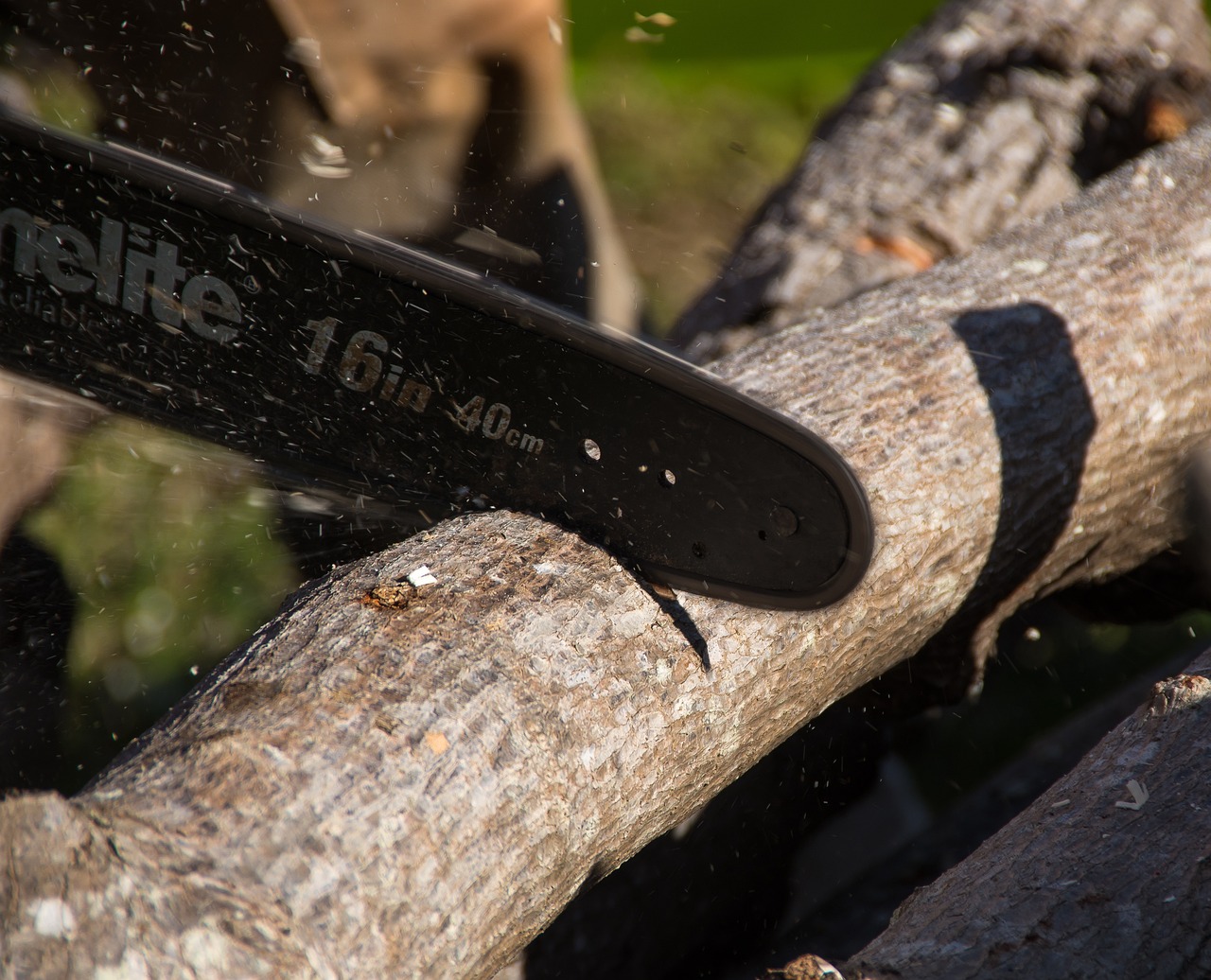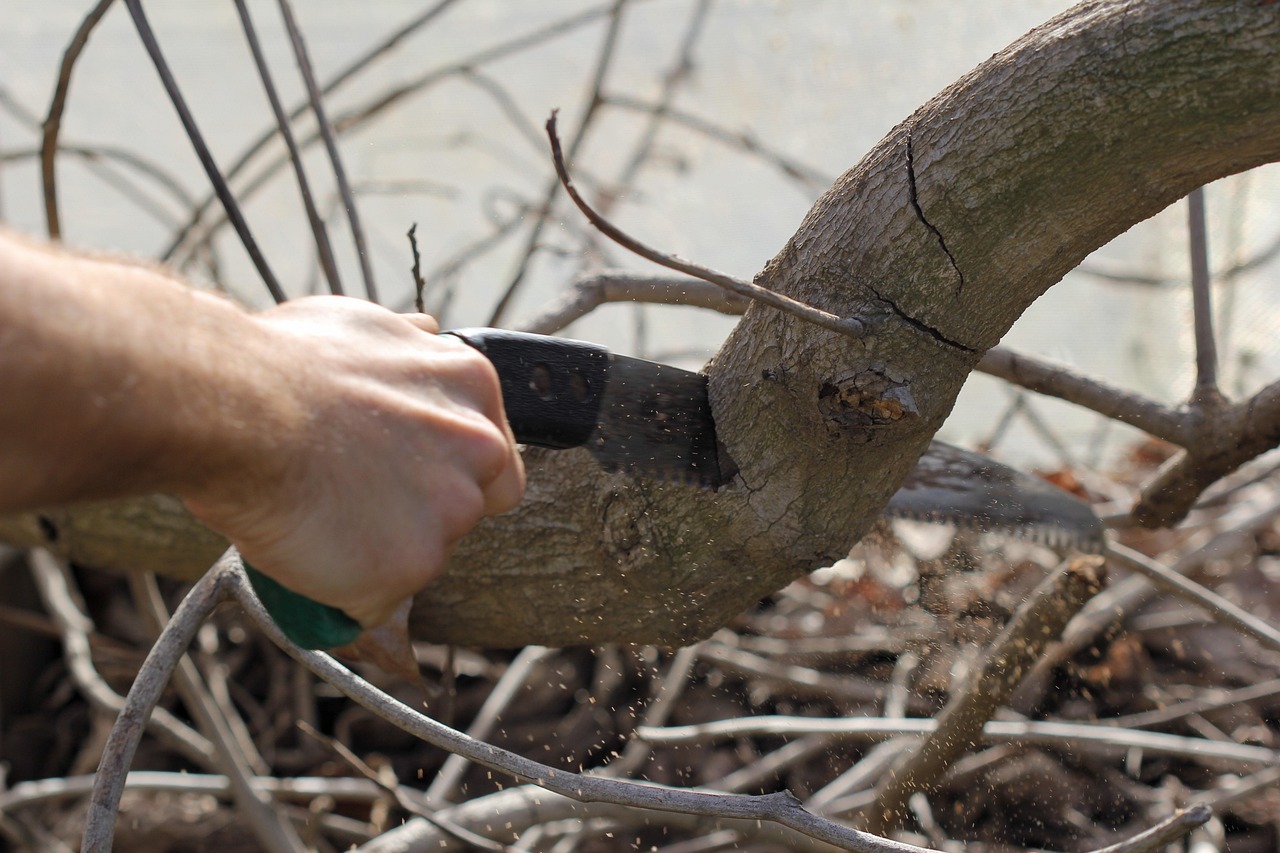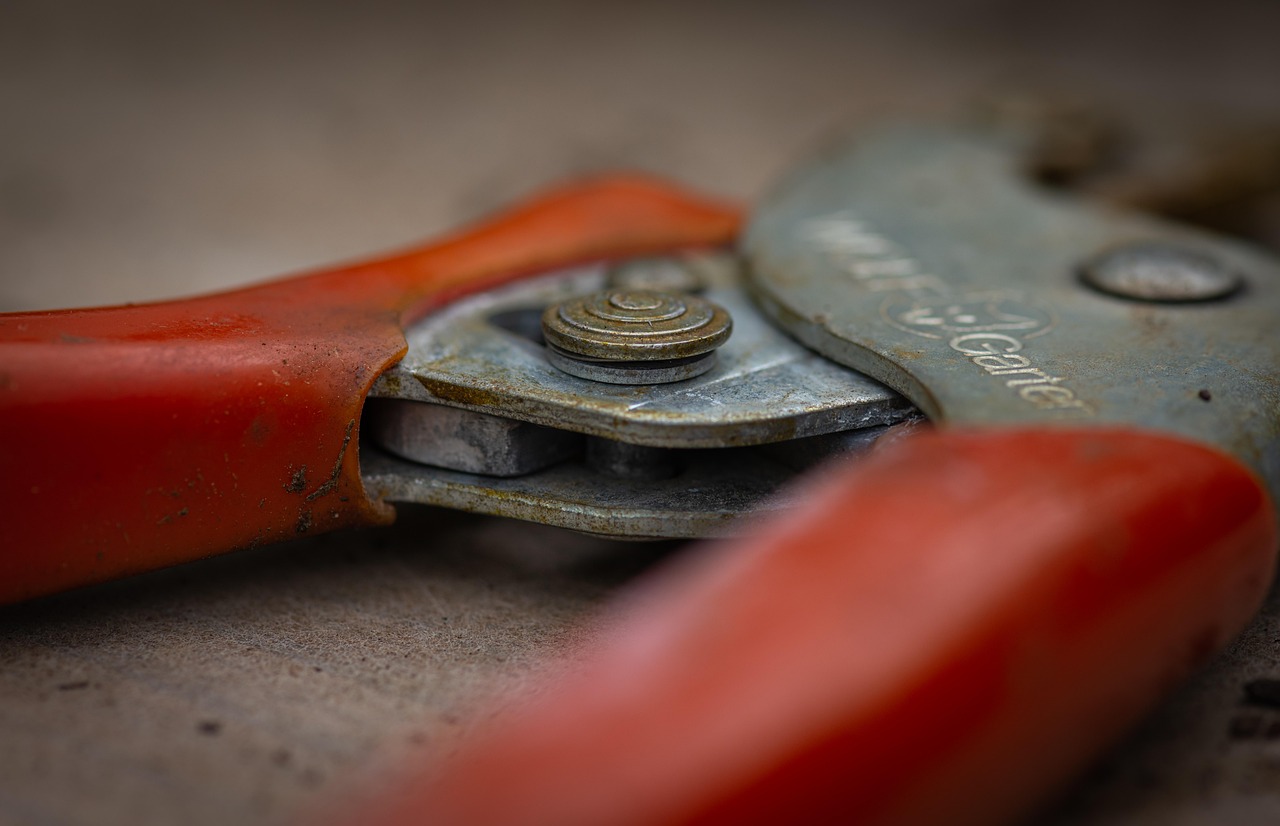To sharpen pruning tools for maximum efficiency, start by cleaning the blades. Use a sharpening stone or file to create a sharp edge, maintaining the original angle of the blade. Finally, lubricate moving parts and check the tool’s alignment for optimal performance.
Pruning tools are essential for maintaining the health and aesthetic appeal of plants in gardens and landscapes. Over time, these tools can become dull and less effective. Dull blades not only make the job more difficult but can also damage plants, leading to poor cuts that may invite disease or pests. Therefore, regular maintenance, including sharpening, is crucial for ensuring that pruning tools operate at their best.

The most common types of pruning tools include hand pruners, loppers, and hedge shears. Each of these tools requires different sharpening techniques due to their unique designs and intended uses. Understanding how to effectively sharpen each type can greatly enhance your gardening experience and promote healthier plant growth.
Types of Pruning Tools
Before diving into the sharpening process, it is essential to familiarize yourself with the various types of pruning tools. Here is an overview of some commonly used pruning tools:
| Tool | Description | Best Use |
|---|---|---|
| Hand Pruners | Small, handheld tools designed for cutting branches up to ¾ inch thick. | Ideal for trimming small branches and deadheading flowers. |
| Loppers | Larger, two-handed tools with long handles for added leverage. | Great for cutting thicker branches, typically up to 2 inches in diameter. |
| Hedge Shears | Tools with long blades used for shaping and trimming hedges. | Perfect for maintaining the shape of shrubs and hedges. |
Each type of tool serves a specific purpose in gardening. Knowing when and how to use them effectively can lead to a more fruitful gardening experience. However, proper sharpening techniques are equally vital to ensure that these tools deliver clean cuts every time.

Why Sharpening is Important
Sharpening your pruning tools offers multiple benefits. Firstly, sharp blades make cleaner cuts, which can reduce the risk of disease entering the plant. When you make a clean cut, the plant experiences less trauma and can heal more quickly. Secondly, using sharp tools requires less effort. This means you can prune more efficiently and with less strain on your hands and arms.
Additionally, dull tools can lead to uneven cuts that may result in jagged edges. These edges can become entry points for pests and diseases, ultimately harming your plants in the long run. Regularly sharpening your tools can prevent these issues, allowing you to maintain a healthier garden.
Tools Needed for Sharpening
To sharpen your pruning tools effectively, you will need a few basic items:

- A sharpening stone or file: Choose a fine grit for a smooth edge.
- A wire brush or steel wool: For cleaning the blades before sharpening.
- Lubricating oil: To keep the blades in good condition after sharpening.
- A cloth or rag: For wiping down tools after cleaning and sharpening.
Having these tools on hand will not only simplify the sharpening process but also ensure that you maintain your pruning tools effectively over time.
Basic Sharpening Techniques
The process of sharpening pruning tools can be straightforward if you follow a few basic steps. Here’s a general guideline to help you get started:
- Begin by cleaning the blades thoroughly with a wire brush or steel wool. Remove any sap, dirt, or rust that may have accumulated.
- Inspect the blade to identify any nicks or damage. This will help you focus on areas that need extra attention during sharpening.
- Using your sharpening stone or file, hold the blade at its original angle. This angle is typically around 20-30 degrees.
- Make smooth, even strokes along the blade edge. Start from the base of the blade and move toward the tip. Repeat this process until you achieve a sharp edge.
- Once sharpened, wipe down the blade again to remove any metal shavings.
- Finally, apply a few drops of lubricating oil to ensure smooth operation.
By following these techniques regularly, you will enhance the performance and longevity of your pruning tools. Taking the time to maintain your tools not only reflects your commitment as a gardener but also contributes positively to the health of your plants.

Advanced Sharpening Techniques
Once you have mastered the basic sharpening techniques, you may want to delve into more advanced methods. These techniques can further enhance the sharpness and longevity of your pruning tools. Understanding these methods will not only improve your skills but also give you better results in your gardening tasks.
Using a Bench Grinder
A bench grinder can be a valuable tool for sharpening pruning tools, especially for those who regularly use them. This method is faster than manual sharpening but requires careful handling.
- Safety First: Always wear safety goggles and gloves when using a bench grinder. Protecting yourself from flying debris is crucial.
- Set the Correct Speed: Adjust the grinder to a low speed. A high speed can overheat the blade, potentially ruining the temper of the steel.
- Maintain Angle: As with manual sharpening, keep the blade at the original angle. This ensures that the cutting edge remains effective.
- Use Water: Keep a container of water nearby. Dipping the blade in water after every few seconds of grinding will help prevent overheating.
Using a bench grinder can yield excellent results, but practice is essential to avoid removing too much material from the blade.
Sharpening with a Rod or Diamond Sharpener
For those who prefer a portable option, a honing rod or diamond sharpener can be effective for quick touch-ups. These tools are particularly useful for maintaining sharpness between more extensive sharpening sessions.
- Hold the honing rod vertically, with the tip resting on a stable surface.
- Position the pruning tool at the correct angle against the rod.
- Make several light strokes down the rod, moving from base to tip.
- Check the edge frequently to ensure that you do not over-sharpen.
This method is quick and efficient, making it an excellent choice for gardeners who regularly prune their plants.
Maintaining Your Pruning Tools
In addition to sharpening, proper maintenance of your pruning tools is crucial for maximizing their efficiency and lifespan. Regular care can prevent rust, preserve sharpness, and ensure smooth operation.
Cleaning Your Tools
Regular cleaning is essential after each use. Here are some steps to effectively clean your pruning tools:
- Remove Debris: Use a wire brush or cloth to remove dirt and sap from the blades.
- Wash with Soapy Water: For more stubborn residue, wash the blades in soapy water and rinse them thoroughly.
- Dry Immediately: Wipe the blades dry to prevent rust formation.
A clean tool not only operates better but also reduces the chances of transferring diseases between plants.
Lubrication Techniques
Lubrication is another key aspect of maintaining pruning tools. Proper lubrication helps to prevent rust and keeps moving parts functioning smoothly. Here are some tips for effective lubrication:
- Select the Right Oil: Use a light machine oil or vegetable oil for lubricating blades and pivot points.
- Apply Sparingly: A few drops are usually sufficient; too much oil can attract dirt and dust.
- Wipe Off Excess: After applying oil, wipe off any excess to maintain a clean working surface.
Storing Your Pruning Tools
Proper storage of your pruning tools can significantly extend their life. Consider these tips for efficient storage:
- Dry Storage: Store tools in a dry area to avoid rust. Avoid damp sheds or garages.
- Use a Tool Rack: Hang tools on a wall-mounted rack or pegboard. This prevents blades from getting damaged and keeps them easily accessible.
- Avoid Overcrowding: Do not pile tools together, as this can lead to nicks and scratches on blades.
By following these storage tips, you can ensure that your pruning tools remain in excellent condition and ready for use when needed.
Identifying When It’s Time to Replace Tools
Even with proper care and maintenance, there may come a time when replacing pruning tools is necessary. Here are some signs that indicate it may be time for new tools:
- Severe Rust or Corrosion: If rust has penetrated deeply into the metal, replacement may be necessary, as it can compromise effectiveness.
- Dull Blades That Won’t Sharpen: If repeated sharpening does not restore sharpness, it may be time for a new tool.
- Cracks or Chips: Any visible damage to blades or handles can compromise safety and performance.
By being attentive to these signs, you can ensure that your gardening experience remains efficient and enjoyable. Maintaining your pruning tools not only enhances their performance but also contributes to a healthier garden overall.
Choosing the Right Pruning Tools
Selecting the correct pruning tools is just as important as knowing how to sharpen and maintain them. The right tools not only make your gardening tasks easier but also ensure that you achieve the best results. Different types of pruning tools are designed for specific tasks and plant types, so understanding your options is crucial.
Factors to Consider When Choosing Pruning Tools
When selecting pruning tools, consider the following factors:
- Type of Plants: Different plants require different types of cuts. For instance, flowering shrubs may need various techniques compared to trees or vines.
- Branch Thickness: Choose tools based on the thickness of branches you typically prune. Hand pruners are great for small branches, while loppers or saws are needed for thicker ones.
- Tool Weight and Size: Make sure the tools are comfortable to hold and easy to maneuver. Heavier tools can lead to fatigue during prolonged use.
- Grip Type: Look for ergonomic handles that provide a comfortable grip, reducing strain on your hands.
Types of Pruning Tools and Their Uses
Understanding the various types of pruning tools available can help you make informed decisions. Here are some common pruning tools and their primary uses:
| Tool Type | Description | Primary Use |
|---|---|---|
| Bypass Pruners | Two blades that slide past each other, similar to scissors. | Ideal for making clean cuts on living plants. |
| Anvil Pruners | A single blade that cuts against a flat surface. | Best for cutting dead wood or dry stems. |
| Trees Saws | Long serrated blades designed for cutting larger branches. | Efficient for thick branches that cannot be cut with pruners. |
| Hedge Shears | Long blades designed for trimming hedges and shrubs. | Perfect for shaping and maintaining hedges. |
By familiarizing yourself with these tools and their intended uses, you can select the most suitable options for your gardening needs.
Safety Tips for Using Pruning Tools
Using pruning tools safely is paramount to avoid accidents and injuries while gardening. Here are some essential safety tips:
- Wear Protective Gear: Always wear gloves to protect your hands. Safety goggles can also shield your eyes from debris.
- Inspect Tools Before Use: Check for any damage or wear on tools before using them to ensure they function safely.
- Keep Tools Sharp: Dull tools require more force, increasing the risk of slipping and injuring yourself.
- Aim Away from Your Body: Always cut away from your body and keep your hands clear of the cutting path.
- Use the Right Tool for the Job: Avoid using inappropriate tools for tasks, as this can lead to accidents or damage.
The Importance of Seasonal Maintenance
Seasonal maintenance is essential to prepare your pruning tools for the upcoming gardening tasks. Each season brings different challenges, and being proactive can enhance tool performance and longevity.
Spring Maintenance
The arrival of spring marks the beginning of the gardening season. Here are some maintenance tasks to consider during this time:
- Thorough Cleaning: Clean all pruning tools to remove any dirt or sap that may have accumulated over winter.
- Inspect for Damage: Check blades for nicks or rust and sharpen as needed.
- Lubricate Moving Parts: Apply oil to pivot points to ensure smooth operation throughout the season.
Summer Maintenance
During the summer months, regular use can lead to wear on tools. Consider these maintenance tips:
- Regular Sharpening: Touch up the sharpness of your tools as needed after heavy use.
- Storage Checks: Ensure that tools are stored in a cool, dry place to prevent rust.
- Avoid Overuse: Take breaks during long pruning sessions to prevent fatigue, which can lead to accidents.
Fall Maintenance
The end of the growing season is a good time for thorough maintenance before winter. Focus on these tasks:
- Deep Cleaning: Remove any remaining debris, sap, or soil from blades and handles.
- Final Sharpening: Sharpen blades one last time before storing them away for winter.
- Protective Coating: Apply a light layer of oil to prevent rust during storage.
Your pruning tools will be more effective and last longer with consistent seasonal maintenance. Adopting these practices will not only enhance your gardening experience but also contribute to healthier plants throughout the year.
Pest and Disease Management with Pruning Tools
Pest and disease management is an essential aspect of gardening that can be aided by proper pruning techniques. Using clean and sharp tools helps prevent the spread of diseases between plants. Here’s how you can effectively manage pests and diseases while pruning:
- Disinfect Tools: Before moving from one plant to another, especially if you suspect disease, disinfect your pruning tools with rubbing alcohol or a bleach solution. This helps prevent cross-contamination.
- Avoid Pruning Wet Plants: Pruning wet plants can spread fungal infections. Wait until foliage is dry before proceeding with cuts.
- Treat Cuts Immediately: After making cuts on affected plants, treat them with appropriate fungicides or sealants to minimize exposure to diseases.
By being vigilant about pest and disease management during pruning, you contribute significantly to the health of your garden. Implementing these practices ensures that your plants grow robustly and remain free from harmful infestations.
Managing pests and diseases while pruning is critical to maintaining a healthy garden. In addition to the steps previously mentioned, there are additional strategies you can employ to enhance your pest control measures:
Integrated Pest Management (IPM) Practices
Integrated Pest Management (IPM) is a holistic approach that combines various management strategies to reduce pest populations in an environmentally friendly way. Here are some key components of IPM that can complement your pruning efforts:
- Monitoring: Regularly inspect plants for signs of pests or diseases. Early detection can help you take action before infestations escalate.
- Encouraging Beneficial Insects: Attract beneficial insects like ladybugs and lacewings, which naturally control pest populations. You can do this by planting a variety of flowers that provide nectar and pollen.
- Crop Rotation: Rotate your crops each season to disrupt pest life cycles and prevent them from becoming established.
- Using Organic Pesticides: If necessary, opt for organic pesticides that are less harmful to beneficial insects and the environment.
Implementing IPM practices along with proper pruning techniques will create a more resilient garden ecosystem, reducing the likelihood of severe pest infestations or plant diseases.
Choosing Quality Pruning Tools
The quality of pruning tools directly affects their performance and your gardening experience. Investing in high-quality tools can yield long-term benefits. Here are some factors to consider when selecting tools:
- Material: Look for tools made from high-carbon steel or stainless steel. These materials tend to hold an edge longer and resist rust.
- Brand Reputation: Research brands known for their durability and performance. Reading reviews or asking fellow gardeners for recommendations can be helpful.
- Warranty: Opt for tools that come with a warranty, indicating the manufacturer’s confidence in their product.
A well-chosen tool not only makes the job easier but also enhances your overall gardening experience.
The Role of Education in Gardening
Continual education plays a vital role in successful gardening. Staying informed about the latest techniques, tools, and trends can greatly improve your skills. Here are some ways to enhance your gardening knowledge:
- Workshops and Classes: Participate in local workshops or community college classes focused on gardening techniques, tool maintenance, and pest management.
- Online Resources: Utilize online platforms such as gardening websites, forums, and social media groups to share experiences and learn from others.
- Books and Magazines: Read books and subscribe to gardening magazines that discuss pruning techniques, tool care, and plant health.
The more knowledge you acquire, the better equipped you will be to handle challenges in your garden effectively.
Community Gardening Initiatives
Engaging in community gardening initiatives is another excellent way to learn and share knowledge. These programs often encourage collaboration among gardeners, allowing participants to exchange tips and experiences. Here’s how you can get involved:
- Join Local Gardening Clubs: Many cities have clubs where gardeners meet regularly to share knowledge, tools, and resources.
- Participate in Community Gardens: Getting involved in a community garden project can provide hands-on experience with different plants and gardening techniques.
- Volunteer Opportunities: Offer your time at local botanical gardens or horticultural societies to gain insight from experienced gardeners.
Collaborating with others can greatly enhance your skills while also fostering a sense of community around gardening.
Conclusion
The art of pruning is essential for maintaining healthy plants and achieving a thriving garden. Understanding how to sharpen your tools properly not only maximizes their efficiency but also enhances your overall gardening experience. By investing time in regular maintenance, selecting quality tools, practicing safe techniques, and employing integrated pest management strategies, you set the foundation for a successful gardening endeavor.
Remember that continuous learning is vital in the world of gardening. By staying informed about best practices and engaging with fellow gardeners, you will cultivate not only beautiful plants but also a fulfilling hobby that connects you with nature. Embrace the journey of pruning and tool maintenance, knowing that every effort contributes to the health and beauty of your garden.
